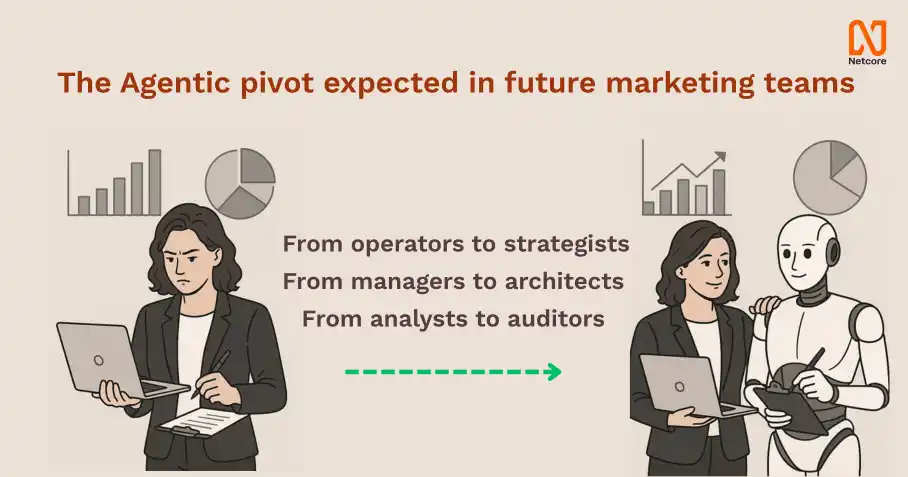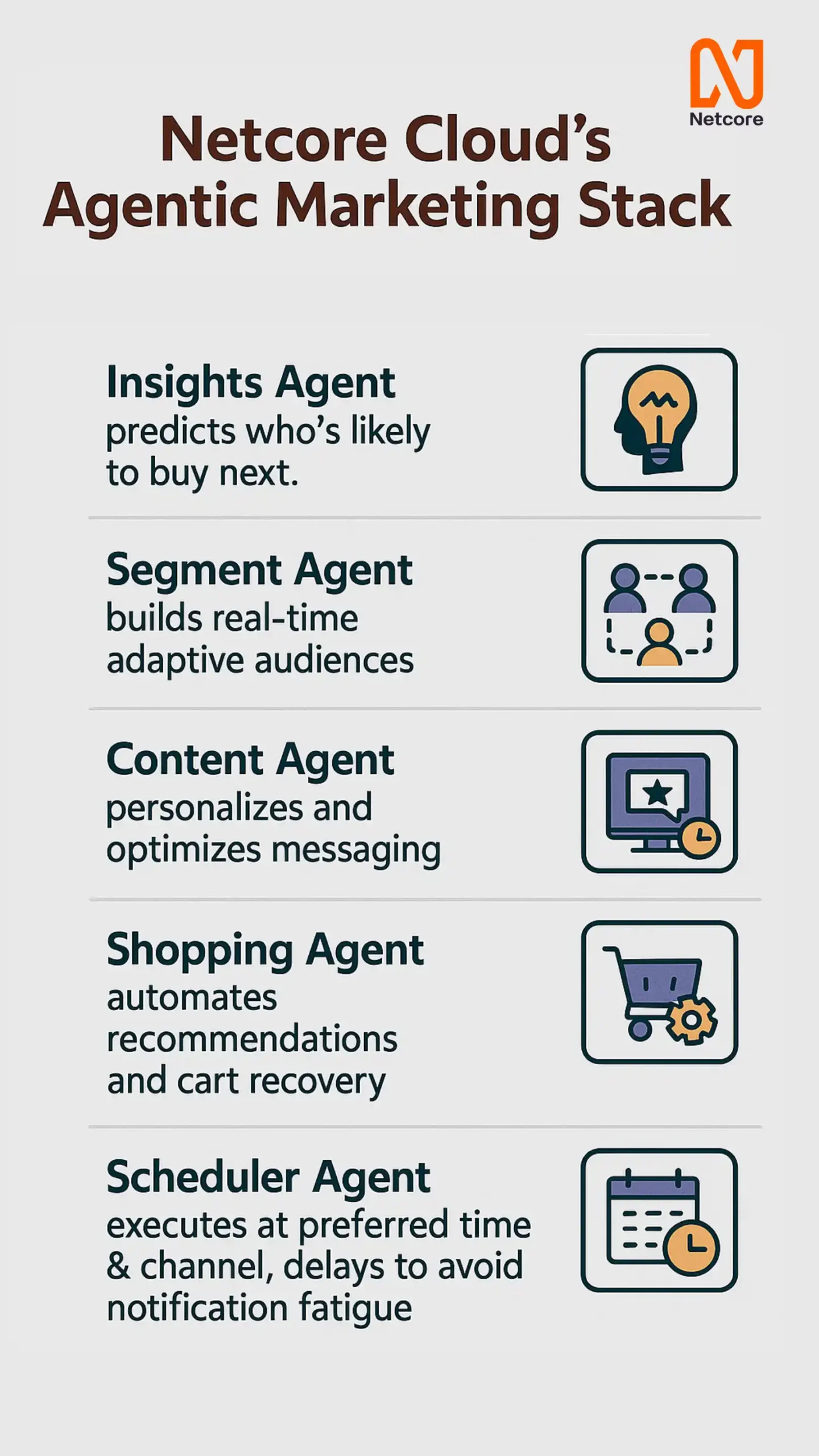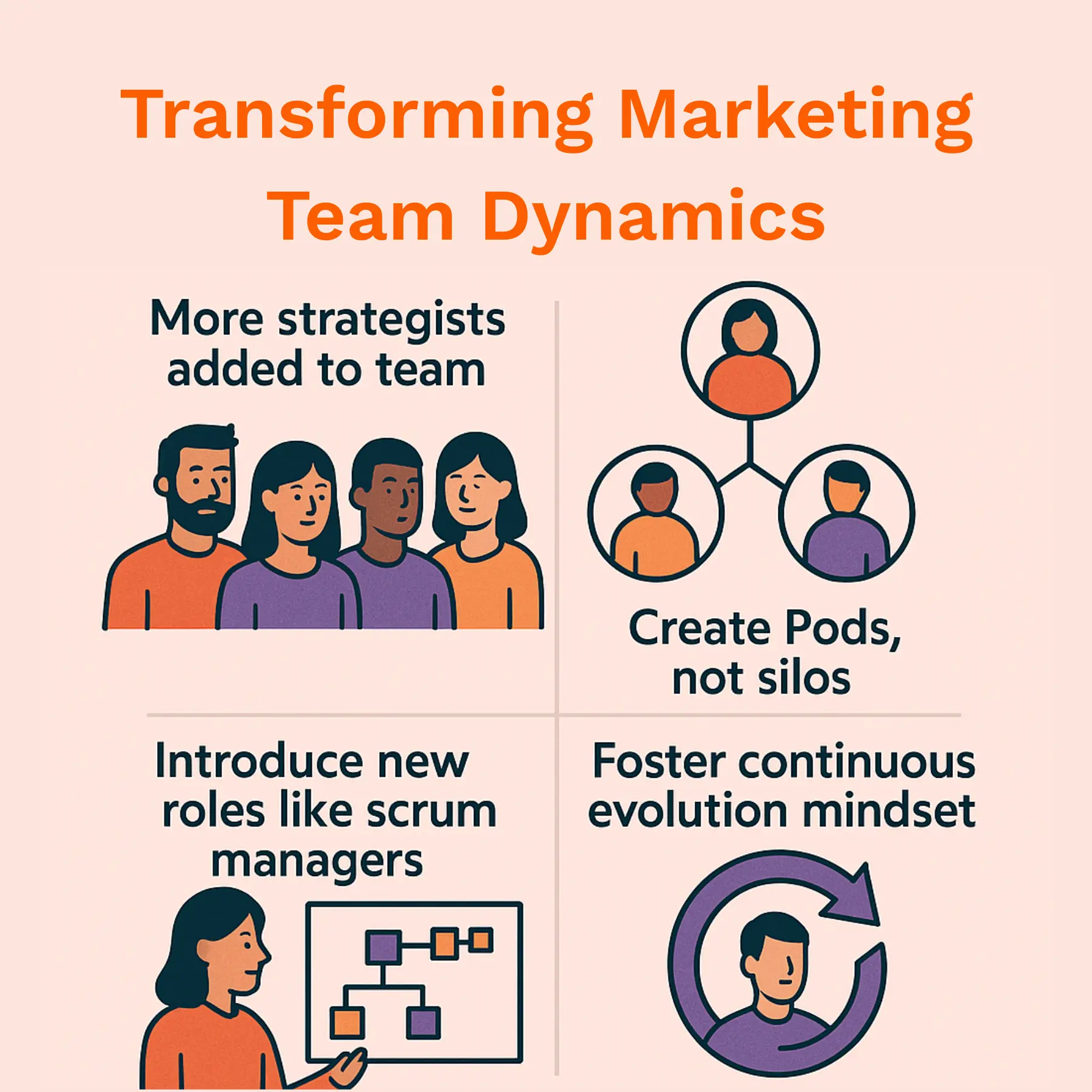Picture the average marketing team in 2025. The analyst is knee-deep in dashboards. The content lead is scrambling to hit the calendar. The campaign manager? They’re juggling Salesforce, Google Ads, HubSpot, and three Slack channels at once.
Every role is valuable—but the system is stretched thin. Complexity scales faster than capacity, and every “optimization” feels like patchwork on a leaking ship.
That’s where Agentic Marketing enters the picture. Unlike the last wave of marketing automation, these aren’t passive tools waiting for human instructions. They’re autonomous collaborators—agents that learn, decide, and act. And their arrival doesn’t just speed up workflows; it rewires the very architecture of marketing teams.
Think of how cloud computing reshaped IT, or how the App Store changed software distribution forever. Agentic Marketing is on the same trajectory. It’s not just another shiny tool—it’s a shift big enough to redefine how teams are structured, which roles matter most, and even how we measure success.
The Old Model: Silos, Bottlenecks, and Burnout

Before agents, marketing was a human relay race:
- Creative teams hand off assets to campaign managers.
- Segment owners pass targeting lists to activation teams.
- Analysts run reports after the fact, often too late to inform action.
The result? Campaigns take weeks to launch, testing is limited, and customer experiences feel fragmented. Human-driven orchestration simply can’t keep up with the speed and scale of customer expectations.
It’s no wonder marketers report spending more time managing tools than engaging customers.
The Agentic Pivot: When Teams Gain Autonomous Collaborators

Agentic Marketing changes the dynamic. These systems don’t wait for approval to A/B test subject lines or segment audiences. They run continuous micro-experiments, adapt campaigns in real time, and orchestrate personalized journeys without human intervention.
That doesn’t mean humans are obsolete—it means their roles evolve:
- From operators to strategists: marketers define outcomes, not activities.
- From managers to architects: they design how agents interact and set guardrails.
- From analysts to auditors: they validate results, ensure brand alignment, and fine-tune strategy.
The shift is subtle but profound: teams move from execution-heavy to outcome-focused.
The Levers of Reinvention
What exactly powers this reinvention? Four levers define the agentic team era:
- Attention → Agents drive daily, habit-forming engagement that compounds. Think Duolingo’s streaks, simple nudges that keep users coming back.
- Autonomy → Agents act proactively. Tesla’s Autopilot doesn’t just follow orders; it anticipates and adjusts.
- Self-optimization → Continuous learning compounds performance. Amazon’s recommendation engine, refined for decades, now generates 35% of revenue.
- Networks → When insights are shared across systems, efficiency accelerates. Waze turned drivers into a predictive traffic system through anonymized data sharing.
Together, these levers don’t just optimize campaigns—they redefine how teams work, shifting focus from doing tasks to designing systems.
Transitioning from Today’s Teams to Agentic Teams
No organization goes agentic overnight. The path is phased, deliberate, and low-risk:
1. Start with hybrid subscription models plus performance bonuses for AI-driven outcomes.
2. Pilot outcome-based projects like cart recovery, churn reduction, or upsell campaigns where attribution is clear.
3. Expand gradually as agents prove reliable, scale their scope across segments and channels.
Consider HubSpot. It began with simple subscription-based software, but over time layered on a marketplace ecosystem and performance-based integrations. Today, customers can tie investments directly to outcomes—proof that evolution, not revolution, builds trust and adoption. Know more about how HubSpot let the inbound revolution here.
Real-World Early Wins
We’re already seeing agentic models in action:
- Intercom’s Fin charges per resolved issue, not per seat. It aligns payment with customer outcomes, not activity.
- Hitachi Rail offers trains-as-a-service, pricing contracts on punctuality and availability. Marketing teams can learn from this: align fees with what customers truly value.
- Salesforce’s Agentforce shows how large platforms are embedding agents directly into marketing workflows, reducing manual load while improving results.

Closer to home, companies using Netcore’s AI Agents—Insights, Segment, Content, and Shopping—are building modular agent marketplaces. Teams assemble only what they need, scaling capabilities while keeping costs aligned with outcomes.
The Risks and the Guardrails
Reinvention comes with friction. Teams adopting Agentic Marketing must navigate:
- Trust gaps: fear that agents might go rogue or misrepresent brand voice.
- Attribution disputes: proving uplift belongs to agents, not other efforts.
- Over-automation: the risk of efficiency at the expense of empathy.
- Ethics and privacy: ensuring agents act transparently and within compliance.
There’s also a more human challenge: the AI readiness gap. As Fortune recently highlighted, many employees are uneasy about the pace of AI adoption. In a survey of 1,000 U.S. workers, those who rely heavily on AI tools often do so without adequate training, support, or even consent from their employers. Only 44% of entry-level staff say they’ve received meaningful AI training. Unsurprisingly, this creates anxiety and resistance.
The fix isn’t just more tech—it’s more transparency and enablement. Companies can reduce unease by fostering AI proficiency, offering structured training, and openly communicating how and why agents are being introduced. As one HR leader advises, clear adoption plans paired with hands-on upskilling go a long way in turning skepticism into confidence.
Guardrails, in other words, aren’t just for the tech. They’re for the people who will work alongside it.
The Future Team: What Reinvention Looks Like

So, what does a high-performing agentic marketing team look like?
- Lean cores: fewer operators, more strategists.
- New roles: agent trainers, auditors, and governance leads.
- Pods, not silos: cross-functional groups combining creative direction, data fluency, and AI oversight.
- Continuous evolution: teams evolve alongside agents, co-learning, co-optimizing, and compounding impact.
It’s a model where human creativity and judgment combine with agent execution speed, creating teams that are smaller, smarter, and more outcome-aligned.
Conclusion
Agentic AI doesn’t just automate marketing; it reshapes the DNA of marketing teams. Roles, structures, and economics evolve around outcomes, not activities.
The opportunity is enormous. Just as Netflix’s subscription pivot redefined media and AWS’s pay-as-you-go model redefined infrastructure, agentic AI will redefine marketing teams. Those who adapt early will capture compounding advantages: faster cycles, deeper personalization, and higher profitability.
The future is clear: legacy teams will struggle to keep pace; agentic teams will lead. The reinvention has already begun. The only question is how quickly your team makes the shift.
 2 YRS IN A ROW
2 YRS IN A ROW  Netcore Named a Leader in 2025 Gartner® Magic Quadrant™ for Search & Product Discovery
Netcore Named a Leader in 2025 Gartner® Magic Quadrant™ for Search & Product Discovery 







